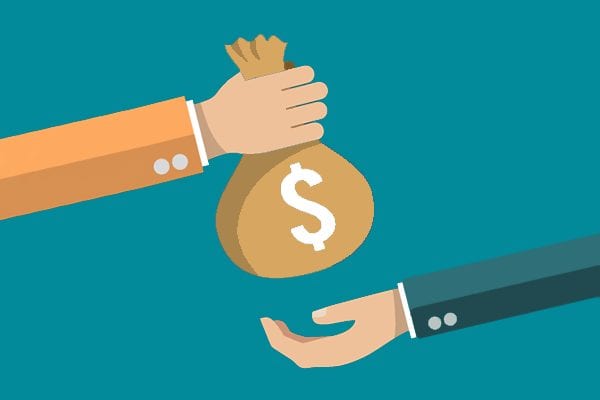Loans can assist you achieve major life goals you couldn’t otherwise afford, like enrolled or purchasing a home. You’ll find loans for every type of actions, and in many cases ones will pay back existing debt. Before borrowing money, however, it is critical to understand the type of mortgage that’s best suited for your requirements. Allow me to share the most typical forms of loans in addition to their key features:

1. Unsecured loans
While auto and home loans are equipped for a particular purpose, signature loans can generally provide for what you choose. Some individuals use them for emergency expenses, weddings or home improvement projects, for example. Personal loans are usually unsecured, meaning they do not require collateral. They’ve already fixed or variable interest rates and repayment regards to a few months to many years.
2. Auto Loans
When you purchase a car, a car loan lets you borrow the buying price of the automobile, minus any deposit. The car may serve as collateral and is repossessed if your borrower stops making payments. Car loans terms generally range between Three years to 72 months, although longer loan terms have become more widespread as auto prices rise.
3. Student education loans
Student education loans can help purchase college and graduate school. They are presented from the two govt and from private lenders. Federal education loans tend to be desirable given that they offer deferment, forbearance, forgiveness and income-based repayment options. Funded through the U.S. Department of your practice and offered as financial aid through schools, they sometimes not one of them a appraisal of creditworthiness. Car loan, including fees, repayment periods and rates of interest, are the same for each and every borrower with similar type of loan.
Student education loans from private lenders, alternatively, usually demand a credit check needed, every lender sets its very own car loan, interest levels and costs. Unlike federal education loans, these refinancing options lack benefits such as loan forgiveness or income-based repayment plans.
4. Mortgages
A home financing loan covers the retail price of the home minus any advance payment. The house serves as collateral, which can be foreclosed from the lender if mortgage payments are missed. Mortgages are normally repaid over 10, 15, 20 or 30 years. Conventional mortgages aren’t insured by government departments. Certain borrowers may be eligible for a mortgages backed by gov departments much like the Intended (FHA) or Va (VA). Mortgages may have fixed rates of interest that stay the same over the lifetime of the loan or adjustable rates that may be changed annually from the lender.
5. Hel-home equity loans
A property equity loan or home equity personal line of credit (HELOC) enables you to borrow up to a percentage of the equity in your home for any purpose. Home equity loans are installment loans: You find a one time payment and repay it over time (usually five to 30 years) in regular monthly installments. A HELOC is revolving credit. Like with a card, you’ll be able to combine the loan line if required during a “draw period” and pay just the eye on the amount borrowed prior to the draw period ends. Then, you always have Twenty years to the borrowed funds. HELOCs are apt to have variable interest levels; home equity loans have fixed rates.
6. Credit-Builder Loans
A credit-builder loan is designed to help those that have a low credit score or no credit file enhance their credit, and could n’t need a appraisal of creditworthiness. The bank puts the money amount (generally $300 to $1,000) in a savings account. After this you make fixed monthly obligations over six to Couple of years. When the loan is repaid, you receive the amount of money back (with interest, occasionally). Before you apply for a credit-builder loan, ensure the lender reports it to the major services (Experian, TransUnion and Equifax) so on-time payments can improve your credit.
7. Debt Consolidation Loans
A personal debt debt consolidation loan can be a personal unsecured loan built to settle high-interest debt, including cards. These refinancing options could help you save money if the interest rate is gloomier than that of your current debt. Consolidating debt also simplifies repayment as it means paying just one single lender as an alternative to several. Settling personal credit card debt having a loan is able to reduce your credit utilization ratio, improving your credit score. Debt consolidation reduction loans can have fixed or variable interest levels plus a range of repayment terms.
8. Pay day loans
One kind of loan to prevent may be the payday advance. These short-term loans typically charge fees similar to apr interest rates (APRs) of 400% or more and should be repaid fully through your next payday. Available from online or brick-and-mortar payday lenders, these plans usually range in amount from $50 to $1,000 and don’t need a credit check needed. Although payday loans are easy to get, they’re often challenging to repay punctually, so borrowers renew them, ultimately causing new charges and fees as well as a vicious loop of debt. Loans or charge cards are better options when you need money to have an emergency.
What sort of Loan Gets the Lowest Interest Rate?
Even among Hotel financing of the same type, loan rates of interest may vary based on several factors, including the lender issuing the money, the creditworthiness in the borrower, the money term and whether or not the loan is unsecured or secured. In general, though, shorter-term or short term loans have higher interest levels than longer-term or secured finance.
To learn more about Hotel financing view our net page
